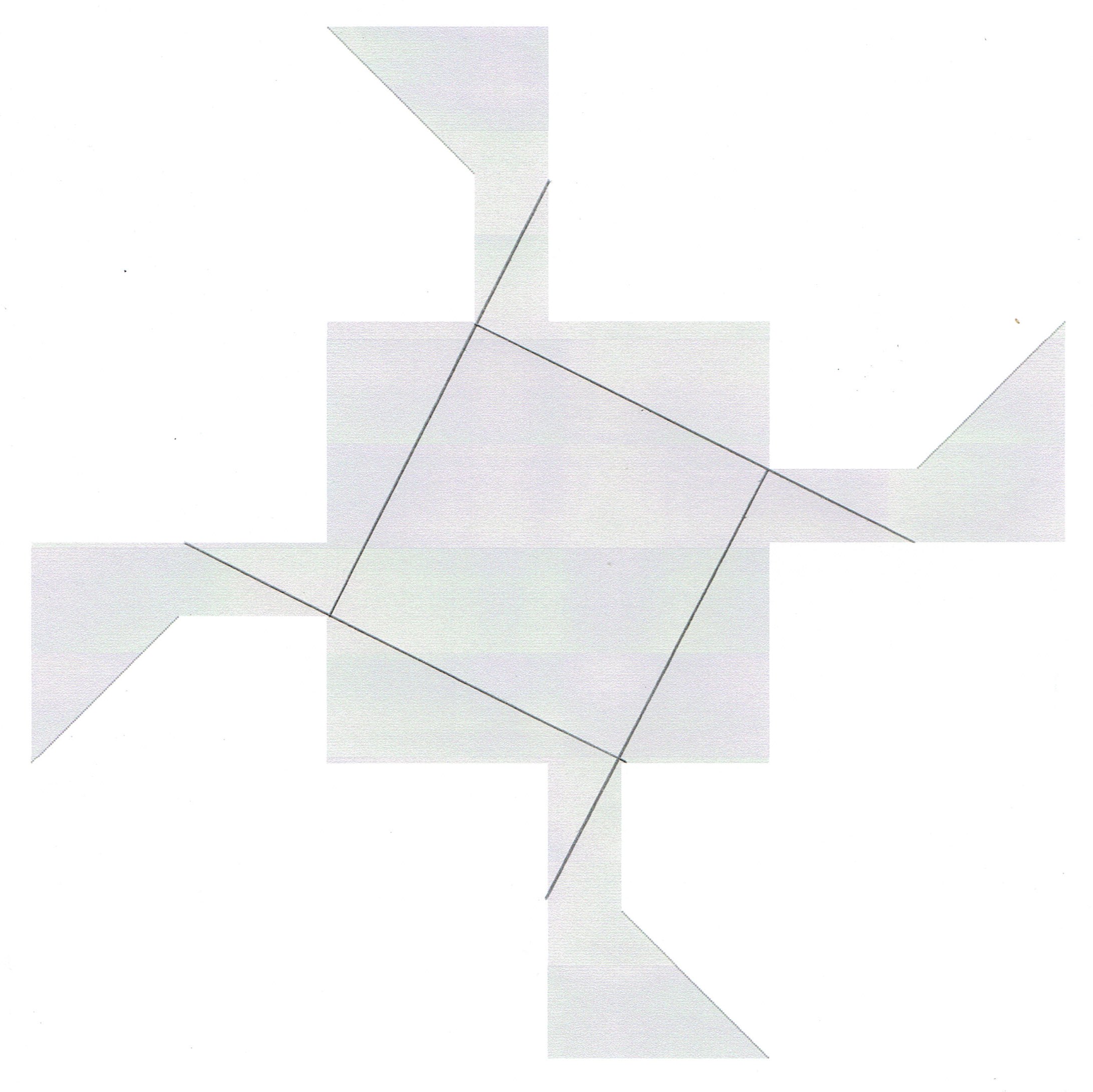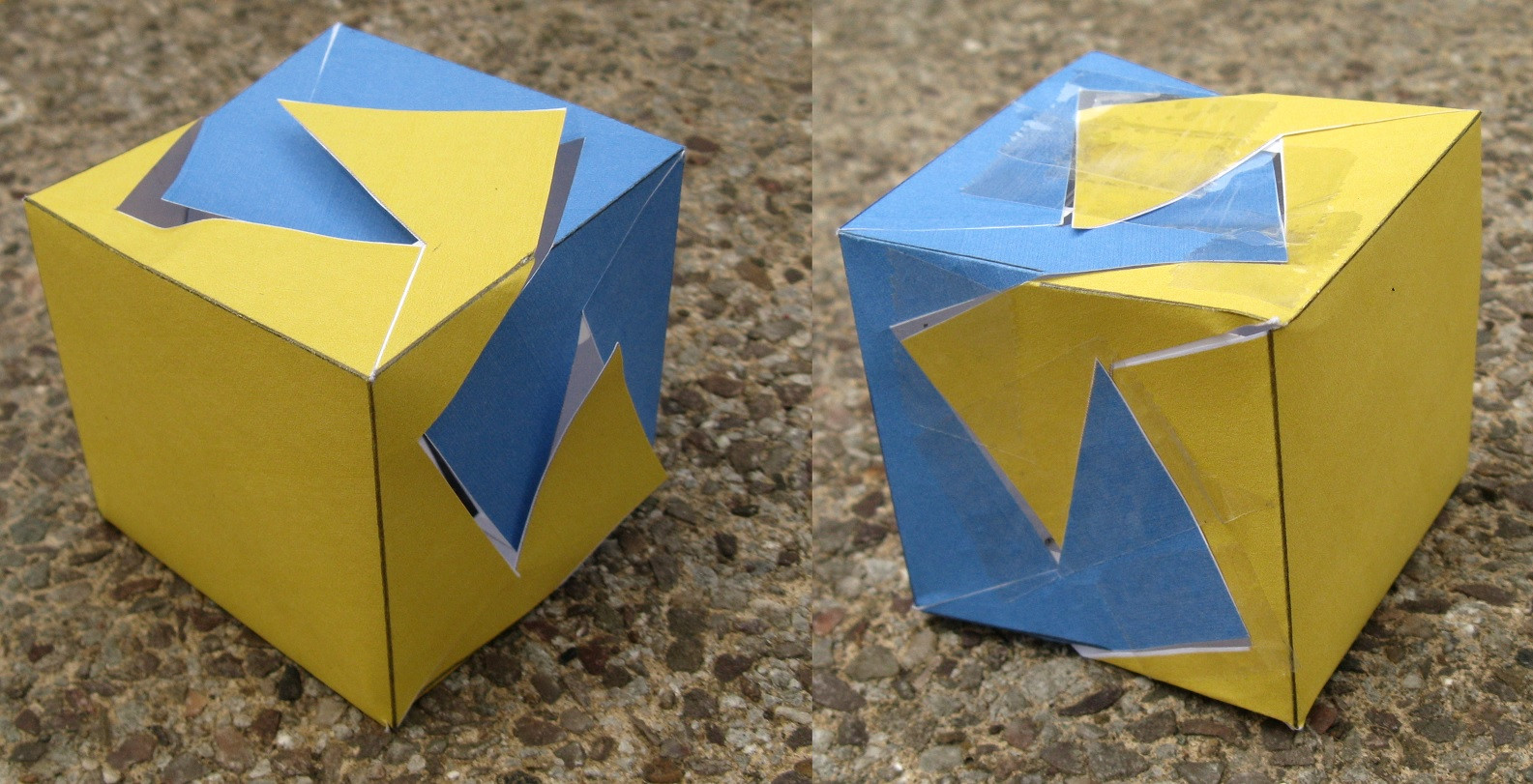The cube can be covered by
two copies
The shapes can be folded like this

Here is one half

As can be seen, I made several attempts before I found a solution.
Here is the "finished" cube, which proves the solution although not very expertly crafted.
In each half four edges need to be joined, where the white sticky paper shows through.

Method
I noticed two ways to mark out the folds, below is another one. In both cases, at first I could only make a parallelpiped shape. Then I managed to make a half-ish right cube from the image below, like a broken eggshell. However the triangle on each of the four sides projected too far, and would not make a cube with another equal part. So I reverted to the first arrangement, and bingo. Originally, I had not thought to extend the four edges of the marked square, which gives the needed folds.

As @Bass points out, there are two solutions: one where the shapes are folded forwards along the crease lines; the other when the folds are made backwards. So each solution is the inside-out version of the other.





